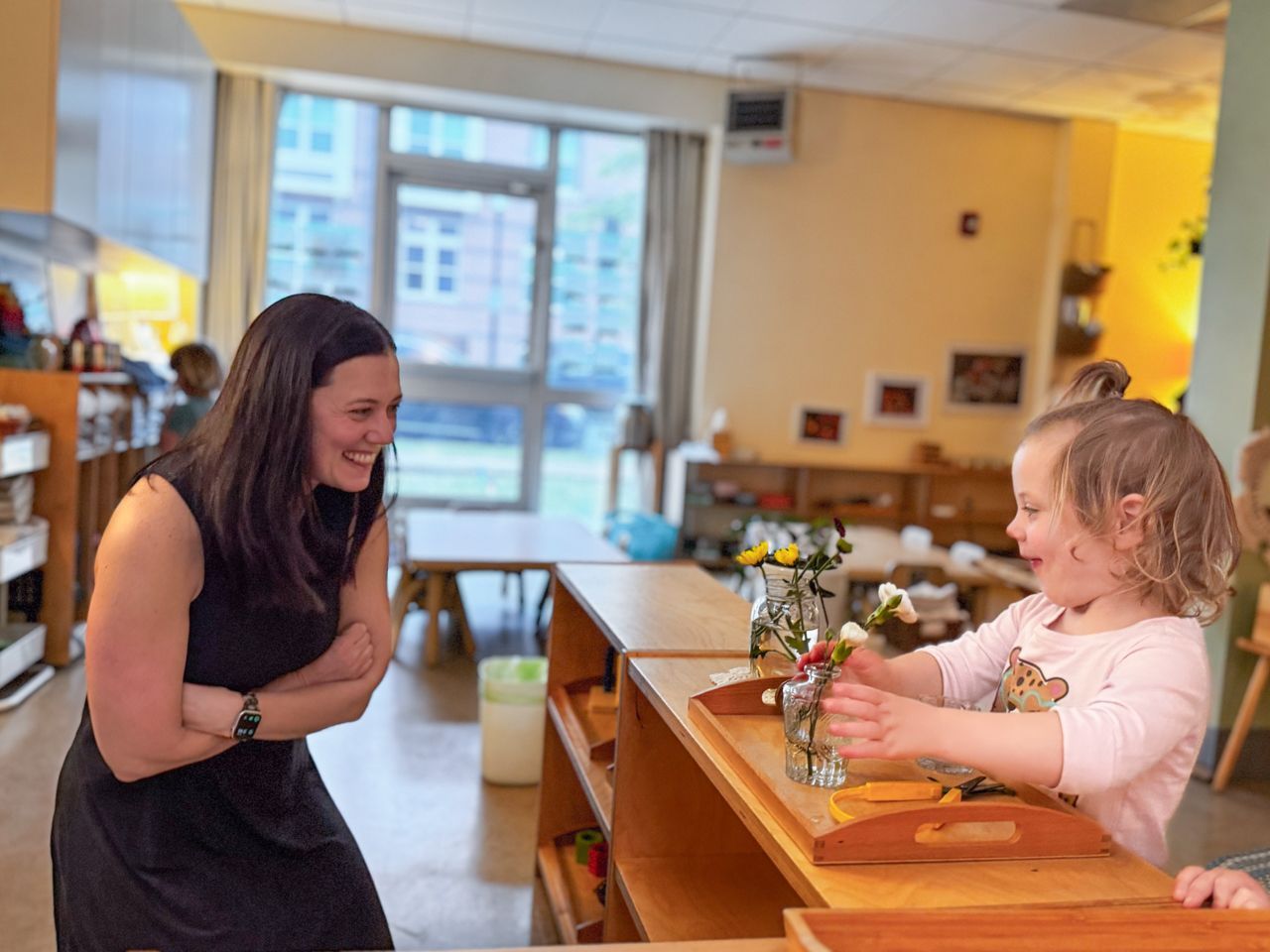Communication
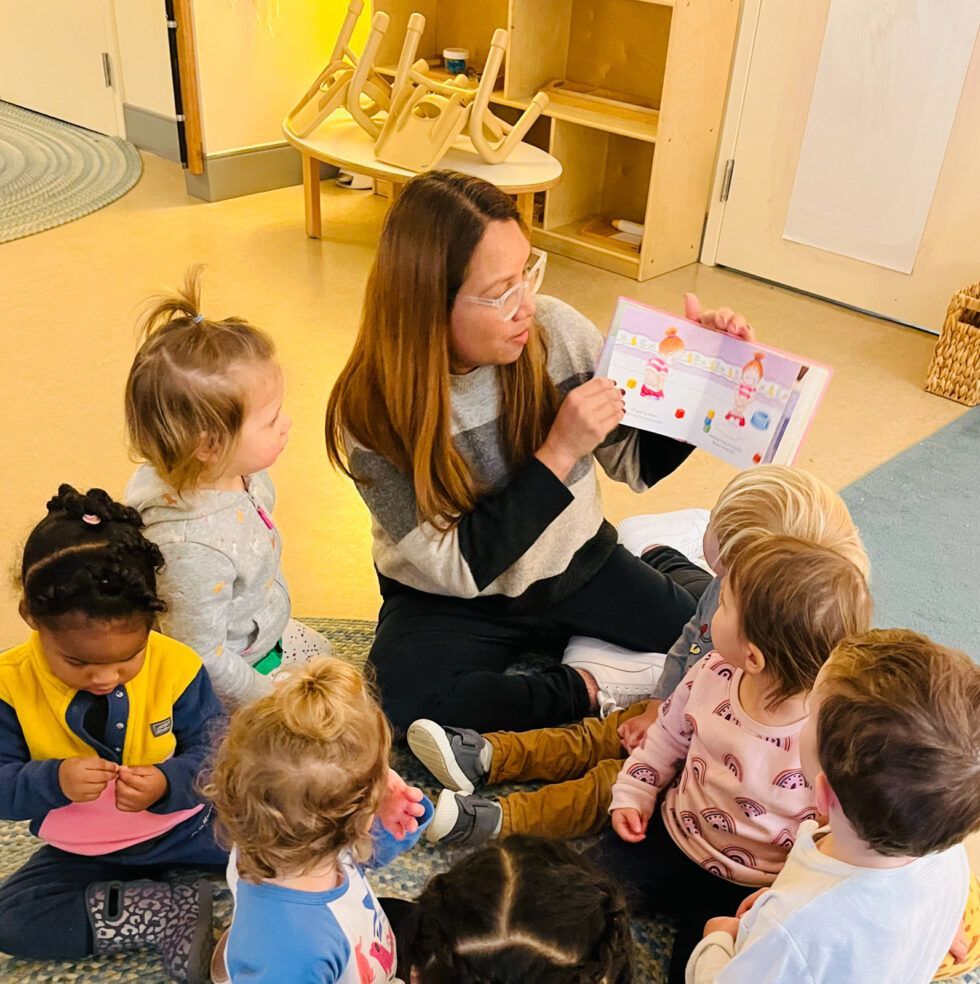
Our children’s early years are essential for developing strong language skills. So, in Montessori, we pay particular attention to how we support young children’s receptive and expressive language development. The exercises we use to enhance children’s spoken language development don’t have a large physical presence on the classroom shelves because many are games or conversations. These spoken language activities are a prominent part of children’s daily experience in our Montessori classrooms. The Purpose Young children are expanding their vocabulary at an astonishing rate: from recognition of about 50 words at age one, to about 1,000 words by age three, to at least 10,000 words by age five! We know that children absorb language effortlessly, so in Montessori we provide children with expansive vocabulary enrichment through a series of mindful oral language exercises. We also recognize that the adult is the most important language material in the classroom, so we use precise language whenever we are communicating with children. We offer rich, full, and beautiful language because we know we are providing an essential foundation for children. Our Favorite Activities We keep oral language alive and lively through a variety of purposeful activities. Classified Picture Books We choose wordless picture books that focus on a theme that is familiar to children or that are classified around a sequence (e.g., Amanda’s day). In the classroom, we sit down with one child and take a “picture walk” through the book to help the child interpret the picture clues. The adult doesn’t tell what is happening and rather asks the child about what they see. This process not only helps children develop their expressive language skills but also sets the stage for future reading and story interpretation. True Stories When we tell true stories, we invite a group of three to five children to join us. Sometimes we use little cultural artifacts or objects as we share stories about everyday life, or we offer little snippets about geography, art, music, biology, and geometry. The key to these stories is that they are based in reality and are not fictional stories. In sharing these stories, we offer children interesting and rich language, as well as spark their interest and imagination! The Question Game For this activity, we gather a small group of children who have a common experience. Then we ask a series of questions about that event. Being mindful to solicit answers from a variety of children, we focus on asking questions that can form a sequence and illuminate details. We then summarize the story based upon the children’s responses. Because children live in the moment and often don’t remember what happened yesterday, we try to do this activity on the day the common experience occurs. In addition to modeling how to tell a story and how to create complete sentences from one-word answers, we are also providing preparation for creative writing by taking an event and structuring it sequentially and highlighting details. Conversation at a Picture To engage children in this activity, we invite a small group to a piece of artwork on display and start a conversation about what the children observe in the picture. We focus on using “w” questions such as: What do you see? Where do you think they are? Why do you think…etc. We keep eliciting conversation by asking more questions: Do you see anything else in this area? Do you notice anything else about this scene? When the conversation begins to fade, we summarize the observations in a small narrative or story. Reading Literature We work to read quality children’s literature every day! When we do so, we highlight the book’s title, the author, and the illustrator. Under the age of six, children live in the present and are trying to adapt to the world around them. Because they are still too young to distinguish between fantasy and reality, we make sure to choose books that are grounded in reality. Reciting Poetry When reciting poetry, we do so from memory. We recite poems over a series of days and, just like with singing, children learn the poems by themselves and love to recite them. Children also absorb phonetic skills from any onset rhyme. Popular nursery rhymes support children’s process of learning to read! Objects in the Environment This activity is actually a series of games that follow a “listen and do” type format. After gathering a group of children, we explain that will say something to do and when a child hears their name, they get to do that action. We start with simple, one-step commands: Touch a shelf. Stand by a window. Walk around a table. We then progress both in complexity in terms of the types and categories objects as well as by offering double commands: Find a friend and shake hands. Choose a book and place it on a table. Play a bell and hum a tune. While quite fun, these games also have the added bonus of helping children develop their auditory memory. Classified Pictures For this work, we have collections of pictures representing categories of objects (types of transportation, furnishings, appliances, playground equipment, etc.), as well as cards with illustrations of geographical, geometrical, biological, and scientific terms (parts of a flower, land and water forms, polygons, etc.). When doing this activity with a child, we first name the classification (“These are all fruits.”) to help establish mental order. Then we play a little game to teach the vocabulary for the items pictured on the cards. The Sound Game The sound game helps children become aware of the phonemes in our language. We collect several known objects and play an I Spy type game that isolates the beginning sounds of the objects, then later the ending sounds, and eventually the sounds in the middle of the words. The whole purpose of this game is to help children become aware of the sounds that make up words. Spoken language activities are the foundation for children’s receptive and expressive vocabularies. In addition to enhancing their vocabulary and providing an overarching structure for future work in writing and reading, engaging children in language games also helps increase their listening and comprehension skills. Above all, we take the time to listen to children’s own spontaneous efforts to express themselves, so that they gain confidence in speaking and feel that their thoughts have meaning. Come see (and hear!) all this spoken language work when you schedule a visit. We love to share what we do!
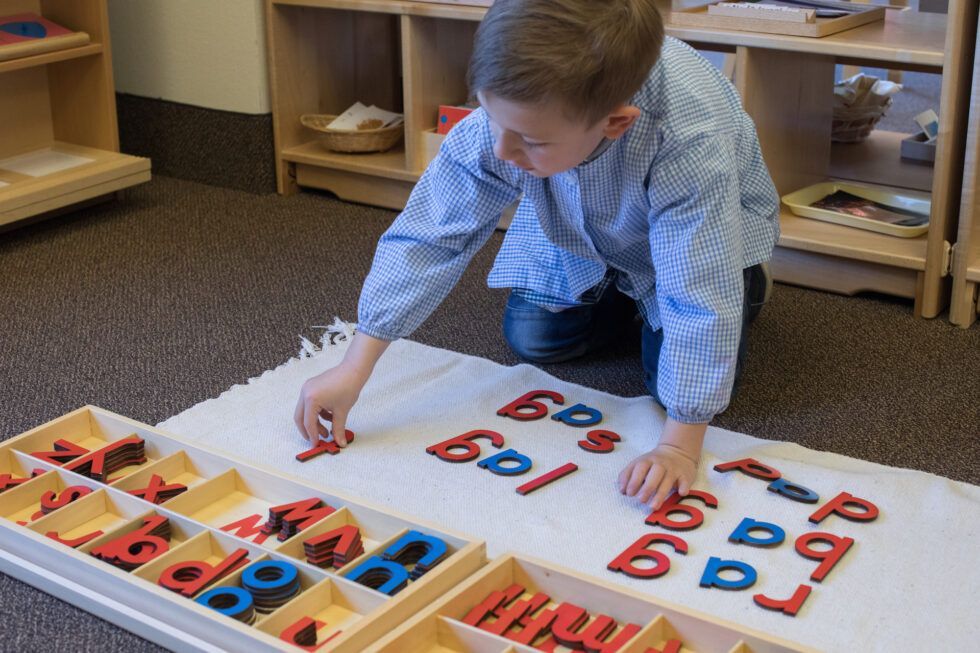
Dr. Maria Montessori felt that in order to support children’s development of language, we first need to appreciate the evolution of language. In fact, the language today’s children use is a culmination of language evolution from the dawn of humans. Languages have expanded and grown to match the complexity of our cultures. Because language is changing and evolving, children create their language as it exists in their environment. Although a child born thousands of years ago had no less potential for developing language than a child today, our languages have grown in fullness and complexity. Evolution of Spoken Language Although we don’t have any records documenting the beginning of spoken language, we can imagine that certain experiences or events drove humans to produce different sounds. Over time these utterances likely became internalized and came to represent an experience. Language is necessary for humans to work together cooperatively. In his memoir, Born a Crime: Stories from a South African Childhood , Trevor Noah relates his experience growing up in South Africa, where there are at least thirty-five indigenous languages, eleven of which are official languages. As someone who speaks seven different languages, Noah experienced first-hand how language can bridge divides: “Language, even more than color, defines who you are to people.” Early humans developed language as a means of communication, but humans were isolated into small tribes or clans. Each group developed their own agreed upon communications. As populations increased and migration happened, communities came into contact. Some words got shared. Some new words were created. Etymology gives us the histories of the roots of words, and as such, historians can study the evolution of language and human migration through words and their roots. The vocabulary of any language is related to the culture of that community. For instance, the Eskimo language has 27 different words for snow, while Hawaiians have no words for snow. Languages constantly evolve as new experiences emerge in our culture. Currently, we can see this in how words are added or removed from the dictionary. A couple of decades ago, for example, “Google” was not a verb! Primitive spoken languages were primarily nouns interspersed with some adjectives, verbs, prepositions, and conjunctions. Primitive languages actually sounded a lot like how young children speak. As cultures evolved and became more complex, languages evolved their own vocabulary, grammar, and syntax. Evolution of Written Language At some point, humans also developed symbolic language as a way to record their thoughts. These records began as pictures, such as the cave paintings that date from over 30,000 years ago. In the beginning, the pictures were realistic and over time became more symbolic, moving from pictograph alphabets to phonetic alphabets. With a phonetic alphabet containing a limited number of symbols, people could begin to create any word. The birth of the alphabet greatly simplified the writing system. As civilizations evolved, expanded, and became more sophisticated, the expansion of language in written form became more universal. The roots of modern American English reflect the diversity of the culture. While the English language originated in Britain, the Romans added a Latin influence and the French Saxons and Anglos added their own influences. As colonists came to America from different countries, they brought their language to a place where the Native Americans had their own languages. All of these influences were incorporated into American English. This diverse history of the language is what makes it complicated and full of exceptions. Some words retained their original spelling while others were adapted and modified. This varied origin story explains why we can have a sound represented in so many different ways. Just think about the sound “sh” which can be represented in: shock, sugar, emotion, charade, social, and tissue. Once humans developed a writing system as a way of recording thoughts, another skill had to be acquired — reading. If writing is recording our thoughts, reading is interpreting the thoughts of others. Development of Language Just as the evolution of writing and reading happened with humans, there is just as much magic, mystery, and power that happens when each child learns to read. In our prepared environments, we offer children the keys to their language because we have a deep appreciation for the origins of language itself. By understanding the history of language, we can better appreciate what children are accomplishing when they acquire these skills. Our exercises for language are not designed to teach language directly, but to offer support to children’s developing personalities. The method we use in our classrooms evolved from Dr. Montessori’s discoveries about how children learn. What resulted is a revolutionary method that is in harmony with the child’s developmental needs. Children can learn to write and read without even realizing that it is happening. We welcome you to observe this development of language in action in our classrooms. Schedule a tour today!
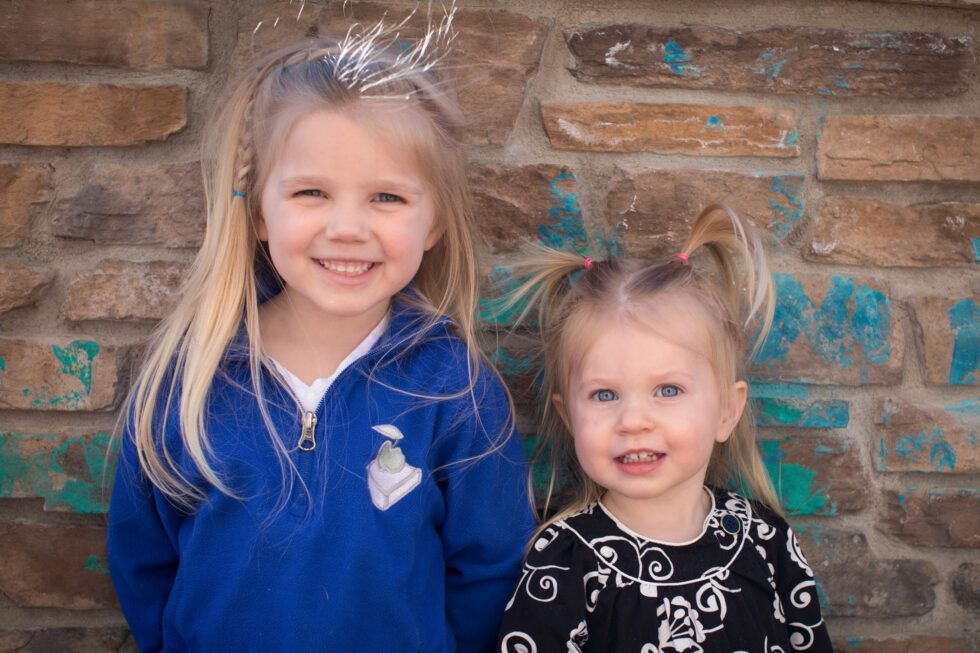
As parents, we want our kids to get along. Yet sibling dynamics can vex even the best of us. We cringe at how much our children can hurt each other, then melt when we see them treating each other with kindness. Their fights can drive us crazy, causing us to worry about whether they will like each other as adults. Fortunately, we can implement strategies to prevent problems between siblings, set the stage for healthy interactions, and practice some techniques for managing conflict in the moment. One of the first steps is taking time to understand our children, ourselves, and the situation. Without taking time to assess these three aspects, we often end up interfering in sibling conflict, which may stop the fight in the moment but that may also inadvertently increase competition and misunderstanding. Check-In with Ourselves When conflicts arise, it helps to first check in with our own feelings. Having awareness of our mental and physical responses allows us to practice self-regulation. We can breathe in deeply through our nose and our mouth. We can pause before responding. We can even express our emotions: “I’m realizing that I’m not feeling very calm right now. Because I’m starting to feel upset, I’m going to take a minute to try to regain some control.” Our children don’t need us to get on the roller coaster! Describe and Empathize Another technique to help in the moment is to describe what we see and to empathize. When we describe what we see in a non-judgmental way, we help our children become aware of what they are doing. This allows them the opportunity to choose if they want to continue. The real key is to do this in a neutral way: “I’m noticing that both of you seem to really want to sit on the bean bag chair. Sometimes it can be hard to both want the same thing.” Examine the Hidden Beliefs When children exhibit behaviors, they have unspoken beliefs behind that behavior. To better understand our children and these beliefs, can start to reflect on any hidden messages. Some questions to consider include: Do our children feel like they need to win, be first, have an item, etc. to be significant in the family? Are they trying to determine their place in the family? Do they feel wronged in some way and want to cause hurt back to others? Do they feel they are being treated unfairly? Are they trying to fight back to have a sense of justice? Is fighting a way to assert power in the situation? We don’t need to have answers to the questions but rather recognize that our children might be operating based on some mistaken beliefs. It’s important to remember that what happens to us isn’t as important as the beliefs we have about what happens to us. Our children just want to belong and feel significant and might need some support in developing new beliefs to feel accepted and important. Shift the Beliefs One way to shift their thinking is to practice putting children in the same boat. When we take sides in an argument or conflict (for example, by reminding an older child to be kind to their younger sibling or assuming wrongdoing in some way), we reinforce competition or hard feelings between siblings. Instead, we can give our children a choice or hold both responsible. If something has been broken, both can be involved in making repairs or amends. If they are fighting in the car, we can pull over and explain that we’ll be happy to get going again when they have resolved their conflict or have decided to stop arguing. If tattling is a regular occurrence, we can empathize and wonder how they will solve the problem together. We can also make sure we aren’t setting up situations that cultivate jealousy or competition by forcing sharing or putting one child’s needs before another’s. Provide Special Time Another way to help our children feel belonging and significance is to schedule special time. Our children need our undivided attention, yet so often as parents, we are pulled in so many directions. One way to address this is to commit to having five to ten minutes of one-on-one time with each child. Let your children know that this is time that you will be with them 100% and that they get to choose what you both do together during that time. Even if it is that activity that you just can’t stand, remember it is only for a short duration! Use a timer and stay committed to having the time each day. This undivided attention helps children feel secure and connected. The result? They are more cooperative with us and each other. New Skills Ultimately helping our children navigate sibling dynamics involves teaching new skills. We can help our children learn how to express themselves kindly and firmly, perhaps even practicing how to share concerns during family meetings. We can involve our children in finding solutions through problem-solving strategies. We can emphasize the value of different perspectives and needs by appreciating each child’s unique qualities and building gratitude into our routines. What we model and promote in our families helps set the stage for how our children navigate not only sibling relationships but their interactions in the world. If you’d like to learn more about how we cultivate respectful, cooperative relationships and help children learn how to resolve differences with respect and kindness, come visit our school!
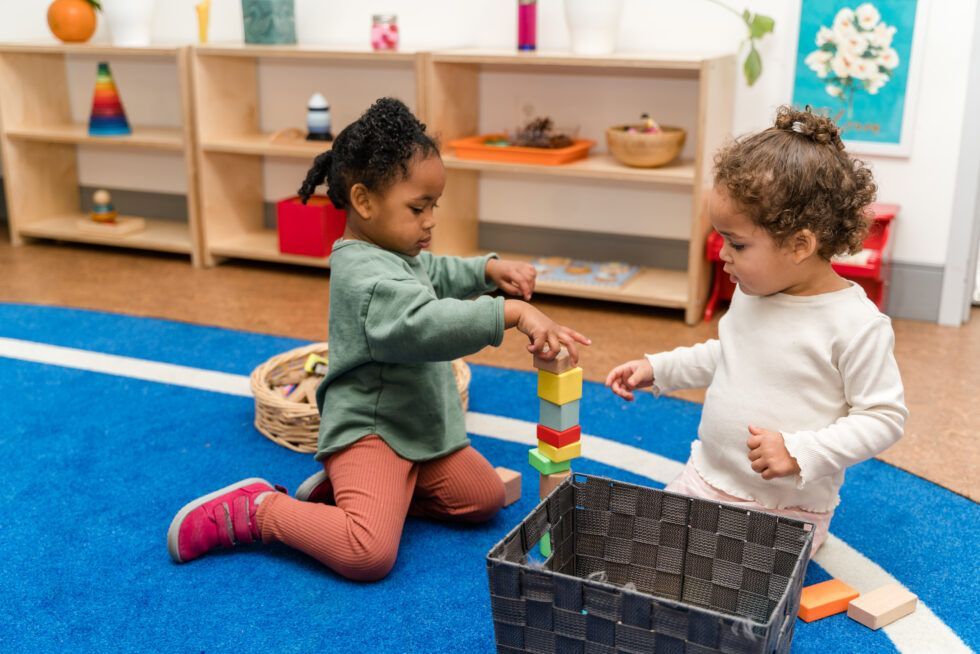
In Montessori, we emphasize two words on a pretty regular basis: grace and courtesy. But what does grace and courtesy really mean? How are they an essential part of Montessori classrooms? And what role do they play in supporting the development of social relationships? What is Grace? What is Courtesy? Let’s first isolate each word. Google’s Oxford Languages defines “grace” in two parts: 1. simple elegance or refinement of movement, and 2. courteous goodwill. Courtesy is defined simply as: the showing of politeness in one’s attitude and behavior toward others. Stated another way, grace and courtesy comprise how we move through the space around us showing respect for ourselves and others. Grace & Courtesy Lessons In our toddler and primary classrooms, grace and courtesy are considered to be part of practical life learning and we devote significant time to grace and courtesy lessons. For example, the adults give explicit instruction on how to walk around someone’s work on the rug, how to wait your turn, how to offer help, how to tuck a chair under the table, or how to introduce oneself. These lessons are offered one-on-one or in small groups and we often use role playing as a technique for exploring the skills. We are very careful about how we introduce grace and courtesy to children. If we see something that needs to be addressed, we try to avoid confronting the child in the moment and we never offer grace and courtesy lessons as a form of punishment or correction. We are careful about this because children are often embarrassed when corrected by adults on the spot. When this happens, they can feel disrespected and not safe, and thus much less likely to perform the act on their own accord. In the Older Years As children enter their elementary and adolescent years, our approach shifts slightly. Elementary-age children are more focused on their social interactions and are learning how to navigate the ups and downs of friendships. As such, much of the grace and courtesy work at this level provides children with tools for communicating directly and respectfully, sharing perspectives thoughtfully, and even being discreet about something potentially embarrassing. In addition, they are learning how to interact with the broader community as they arrange visits or interviews, conduct themselves according to the norms of different communities, and explore how to be a host or be a guest. The Goal The goal in Montessori education is that these acts of grace and courtesy aren’t rigid expectations, like insisting that children say please and thank you. Rather, they become part of how children want to be and interact. Dr. Montessori is quoted as saying: “…the essential thing is that [the child] should know how to perform these actions of courtesy when his little heart prompts him to do so, as part of a social life which develops naturally from moment to moment.” Like all other exercises in Montessori prepared environments, we offer opportunities to regularly practice and repeat grace and courtesy skills. Because these experiences are part of the normal functioning of the day, they provide a respectful way for young people to learn expectations and for adults to provide scaffolding and assistance for social skills. The Results In time, as we offer these grace and courtesy opportunities and give children a safe place to practice, our young people eventually perform these skills independently. When you visit our school, you’re likely to see two young children sitting together, the older one showing the other how to put on their shoes. Or perhaps if you observe in a primary classroom, you might see a child patiently waiting with their hand on their own shoulder, our silent signal that we need someone’s attention, until a teacher is available to help them. Our children bring a sad classmate a tissue or rush to assist when someone has a spill. They tuck their chairs under tables so others don’t trip over them. They carefully place a tray upon a table. They greet each other and adults in the hallways. They hold the door open when they see someone coming their way. In the process, Montessori children move beyond the basic niceties and think deeply about their impact on those around them. We’d love to show you this in action! Schedule a tour to see the ways that grace and courtesy help children recognize themselves as caring individuals within a supportive community.

Our children’s early years are essential for developing strong language skills. So, in Montessori, we pay particular attention to how we support young children’s receptive and expressive language development. The exercises we use to enhance children’s spoken language development don’t have a large physical presence on the classroom shelves because many are games or conversations. These spoken language activities are a prominent part of children’s daily experience in our Montessori classrooms. The Purpose Young children are expanding their vocabulary at an astonishing rate: from recognition of about 50 words at age one, to about 1,000 words by age three, to at least 10,000 words by age five! We know that children absorb language effortlessly, so in Montessori we provide children with expansive vocabulary enrichment through a series of mindful oral language exercises. We also recognize that the adult is the most important language material in the classroom, so we use precise language whenever we are communicating with children. We offer rich, full, and beautiful language because we know we are providing an essential foundation for children. Our Favorite Activities We keep oral language alive and lively through a variety of purposeful activities. Classified Picture Books We choose wordless picture books that focus on a theme that is familiar to children or that are classified around a sequence (e.g., Amanda’s day). In the classroom, we sit down with one child and take a “picture walk” through the book to help the child interpret the picture clues. The adult doesn’t tell what is happening and rather asks the child about what they see. This process not only helps children develop their expressive language skills but also sets the stage for future reading and story interpretation. True Stories When we tell true stories, we invite a group of three to five children to join us. Sometimes we use little cultural artifacts or objects as we share stories about everyday life, or we offer little snippets about geography, art, music, biology, and geometry. The key to these stories is that they are based in reality and are not fictional stories. In sharing these stories, we offer children interesting and rich language, as well as spark their interest and imagination! The Question Game For this activity, we gather a small group of children who have a common experience. Then we ask a series of questions about that event. Being mindful to solicit answers from a variety of children, we focus on asking questions that can form a sequence and illuminate details. We then summarize the story based upon the children’s responses. Because children live in the moment and often don’t remember what happened yesterday, we try to do this activity on the day the common experience occurs. In addition to modeling how to tell a story and how to create complete sentences from one-word answers, we are also providing preparation for creative writing by taking an event and structuring it sequentially and highlighting details. Conversation at a Picture To engage children in this activity, we invite a small group to a piece of artwork on display and start a conversation about what the children observe in the picture. We focus on using “w” questions such as: What do you see? Where do you think they are? Why do you think…etc. We keep eliciting conversation by asking more questions: Do you see anything else in this area? Do you notice anything else about this scene? When the conversation begins to fade, we summarize the observations in a small narrative or story. Reading Literature We work to read quality children’s literature every day! When we do so, we highlight the book’s title, the author, and the illustrator. Under the age of six, children live in the present and are trying to adapt to the world around them. Because they are still too young to distinguish between fantasy and reality, we make sure to choose books that are grounded in reality. Reciting Poetry When reciting poetry, we do so from memory. We recite poems over a series of days and, just like with singing, children learn the poems by themselves and love to recite them. Children also absorb phonetic skills from any onset rhyme. Popular nursery rhymes support children’s process of learning to read! Objects in the Environment This activity is actually a series of games that follow a “listen and do” type format. After gathering a group of children, we explain that will say something to do and when a child hears their name, they get to do that action. We start with simple, one-step commands: Touch a shelf. Stand by a window. Walk around a table. We then progress both in complexity in terms of the types and categories objects as well as by offering double commands: Find a friend and shake hands. Choose a book and place it on a table. Play a bell and hum a tune. While quite fun, these games also have the added bonus of helping children develop their auditory memory. Classified Pictures For this work, we have collections of pictures representing categories of objects (types of transportation, furnishings, appliances, playground equipment, etc.), as well as cards with illustrations of geographical, geometrical, biological, and scientific terms (parts of a flower, land and water forms, polygons, etc.). When doing this activity with a child, we first name the classification (“These are all fruits.”) to help establish mental order. Then we play a little game to teach the vocabulary for the items pictured on the cards. The Sound Game The sound game helps children become aware of the phonemes in our language. We collect several known objects and play an I Spy type game that isolates the beginning sounds of the objects, then later the ending sounds, and eventually the sounds in the middle of the words. The whole purpose of this game is to help children become aware of the sounds that make up words. Spoken language activities are the foundation for children’s receptive and expressive vocabularies. In addition to enhancing their vocabulary and providing an overarching structure for future work in writing and reading, engaging children in language games also helps increase their listening and comprehension skills. Above all, we take the time to listen to children’s own spontaneous efforts to express themselves, so that they gain confidence in speaking and feel that their thoughts have meaning. Come see (and hear!) all this spoken language work when you schedule a visit. We love to share what we do!
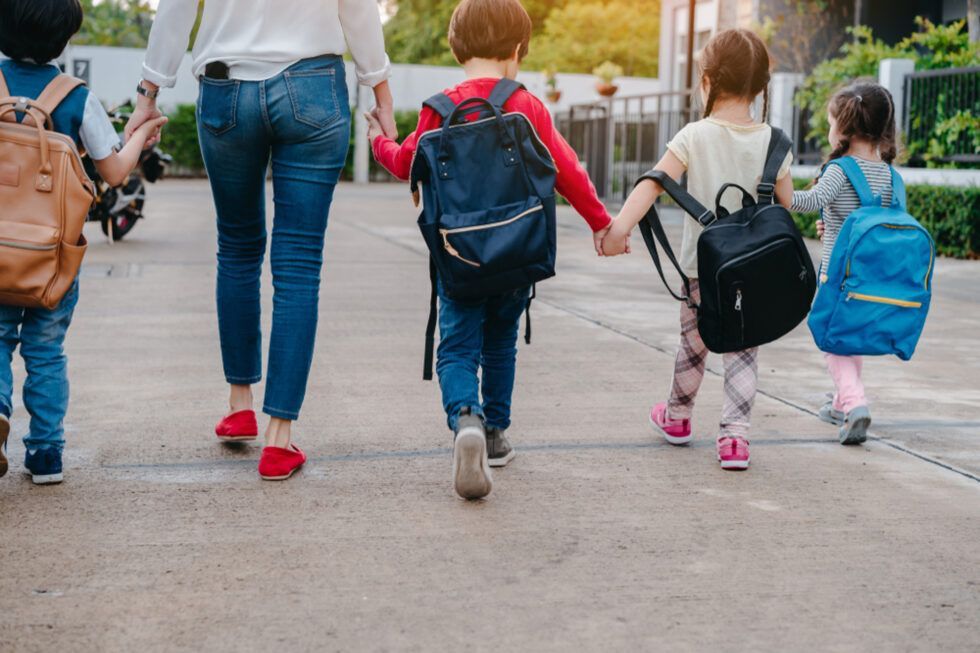
Our children really thrive when home and school environments work cooperatively, communicate well, and share similar educational values and expectations. When families devote sincere effort to learning about Montessori principles and how to reinforce these at home, there are positive effects. We want to partner with you in support of your child! What does a home-school partnership look like in action? In order to reinforce and extend your child’s experience at TOTH, we recommend exploring how to support your child’s independence and problem-solving, staying up to date with school-home communication, and learning about positive-based discipline. Supporting Independence To support independence, it’s important to remember that even the youngest child can engage in real-life activities around the house. They can help set the table, fold the laundry, feed any pets, and tidy a room. Older children can contribute to home life by participating in household chores such as loading and emptying the dishwasher, putting away groceries, gathering trash/recycling, preparing simple meals, and more elaborate pet care. In this process, we want to provide children practice with self-care skills. This can range from putting on their own shoes, to picking out their clothes for the next day, to planning and packing their lunches. Providing children with these opportunities builds independence, confidence, and life skills. Even with very young children, the Montessori approach is “help me to do it myself.” We also want to give our children the opportunity to overcome challenges. They might struggle to get their shoes on at first. Rather than swoop and just quickly do it for them, we can break down the steps and offer some simple verbal guidance: open the velcro first, pull here, open the straps, slide your toes into the shoe, push down, etc. When we provide support for problem-solving rather than “fixing” a problem, we help our children build self-esteem, their sense of purpose, and the determination to master life skills. Communication is Key Although staying up to date with communication seems like a simple step to staying in partnership, lives get so busy and it can be easy to overlook those weekly updates from your child’s teacher or forget to reschedule a missed conference. To prioritize our children’s educational experience, we can take some simple steps to make sure we are in alignment and not working at cross purposes. At the core, we want to maintain respectful, direct, and active communication with each other. This can be as simple as communicating with your child’s guide(s) in a timely manner about significant changes or events in your child’s life. Life outside of school has an impact on your child’s classroom experience, and communicating with your child’s guides will allow them to better support your child during times of transition or challenge. Most recently, our Fall parent-teacher conferences offered a lovely opportunity to collaborate. But please remember that you don’t have to wait until regularly scheduled conferences! Please share observations and concerns about your child or their classroom experience directly with the child’s lead guide. Doing so allows the adults at school to be more responsive to your child’s needs in a timely manner. We want to know your thoughts and feelings sooner than later! Another good step is to familiarize yourself with the handbook each year. It’s easy to think it only requires one read, but it’s worth revisiting the handbook throughout the school year to review school policies and remember important procedures and expectations. Similarly, reading communications from the school and classroom is an effective way to stay current about any updates or changes and to build a trusting partnership with your child’s classroom guides. You are also welcome to reply to the weekly classroom emails with comments or questions for the teachers! We want to hear and understand your perspective. We also want to share how we work to uphold the mission and vision of the school and Montessori pedagogy in a way that balances individual needs with community needs. Communication is key! Practice Positivity We work hard to model respect and positivity. To support this, we ask that you also model respect for your child. This can take the form of practicing positive discipline (read more about this on the Positive Discipline website). Practicing positivity can also mean assuming the best intent. For example, if misunderstanding or conflicts arise, either at home or at school, as adults we can demonstrate respect. We can work toward resolution with graciousness and model being open to hearing another’s perspective. Children are watching and listening. If we speak of community members in positive terms, even if there is a concern or disagreement, our children will learn how to approach potentially tense situations with thought and care. Thank you for being willing to understand and support the school’s policies, stay in communication, support independence, and serve as a role model for all children. We appreciate it when families are willing to learn about and trust the Montessori model of education. This awareness helps us work together to collaboratively support children’s development most effectively. Children thrive when they experience their home and school environments as being in sync! One of the best ways to learn more about the Montessori experience is to observe. Schedule a tour! We would love to connect!

